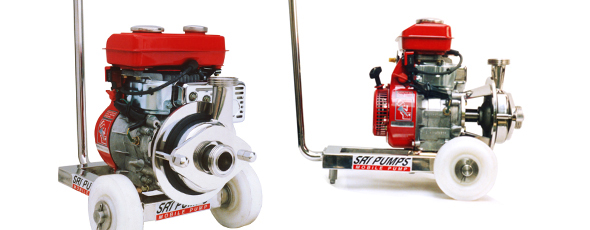Energy-saving valve for the precise and economical control
at the low loss of pressure of liquids and gases
In a process piping system, valves are devices that stop, divert, or control the flow of a fluid (gases, liquids, or slurries) by opening, closing, or partially obstructing a passageway. Valves function in a number of different ways. They are used to start and stop a fluid flow, control the direction of the flow, and vary its amount, depending on the nature of the mechanical barrier used in the valve (a plate, a ball, or a diaphragm).
Valves are also used to regulate a system or process and relieve overpressure situations in a process line. Valves are used extensively in process industries such as pharmaceutical manufacturing and food & beverage processing and choosing the correct type of valve for a particular application is important. The simplest valves are operated manually, activated via a handle, lever, pedal, or wheel. More sophisticated valves or valve systems, though, are activated.
Pumps & Valve Components:
All valves typically contain the following components:
A body, which contains internal parts.
A port, which allows the fluid to pass through the valve.
A handle (if a manually-controlled valve) or an actuator (for automatically-controlled valves).
A stem, which transmits motion from the handle or the valve’s controlling device to form a leak-proof seal.
A disc or similar valve component serves as a moveable obstruction to adjust the flow of the fluid through the valve.
And finally, a seat, which is the interior surface of the body that contacts the disc to form a leak-tight seal.
In almost all manufacturing processes Pumps, Valves and Fittings are generally pivotal in processing. Today SRI PUMPS is in a position to manufacture and supply a full range of Sanitary Pumps, Valves & Fittings for any size of the industry.
Angular valve:
These valves are Manual Operated valves to regulate the flow anywhere from fully open to fully close. These are designed specifically to accurately control the process. Tight shutoff is a characteristic of angular valves.
Ball Valve:
A ball valve is a shut-off valve that controls the flow of a liquid or gas by means of a rotary ball having a bore. By rotating the ball a quarter-turn (90 degrees) around its axis, the medium can flow through or is blocked.
Moreover, they are more resistant to contaminated media than most other types of valves. In special versions, ball valves are also used as a control valve. This application is less common due to the relatively limited accuracy of controlling the flow rate in comparison with other types of control valves.
Butterfly Valve:
Butterfly valves have a relatively simple construction. The main components of a butterfly valve are the body, seal, disc, and stem. A typical butterfly valve has the disc positioned in the center of the connected pipe and a stem that is connected to an actuator or handle on the outside of the valve. In the closed position, the disc is perpendicular to the flow, as shown in Figure 2, and is sealed by the valve seat.
Check Valve:
When choosing a check valve it is important to make a cost-benefit analysis of the specific system. Often the focus is to reduce cost and at the same time obtain the lowest possible pressure loss, but when it comes to checking valves a higher safety equals a higher pressure loss. So in order to make sure the check valve protects the system properly, each system has to be assessed individually, and factors such as the risk of water hammer, acceptable pressure loss, and the financial consequence of installing a check valve with a too high safety margin against water hammer have to be considered.
Divert valve/Cut off valve:
When stopping or diverting flow in a processing system, the Sri Pumps Valves sanitary shutoff and diverter valve series single seat valve line provide both a flexible and reliable solution. These sanitary shutoff and divert valves are pneumatically or manually operated and offered in a wide variety of body configurations.
Flow Control Valve:
The purpose of flow control in a hydraulic system is to regulate speed. All the devices discussed here control the speed of an actuator by regulating the flow rate. Flow rate also determines the rate of energy transfer at any given pressure. The two are related in that the actuator force multiplied by the distance through which it moves (stroke) equals the work done on the load. The energy transferred must also equal the work done. Actuator speed determines the rate of energy transfer (i.e., horsepower), and speed is thus a function of flow rate.






Comments
Post a Comment